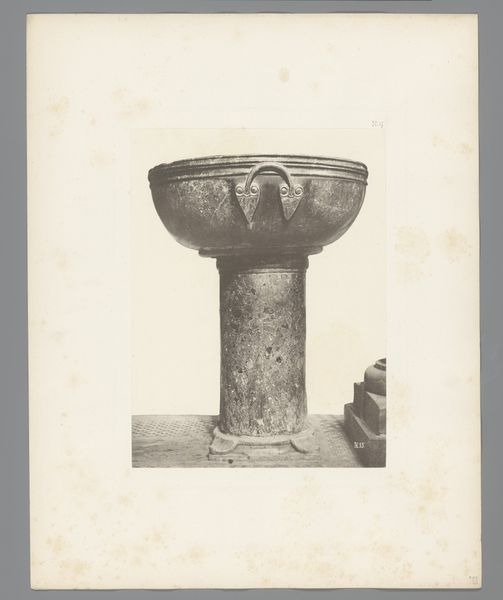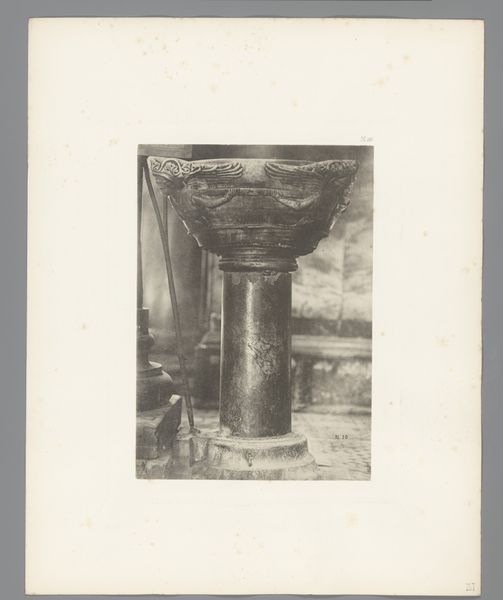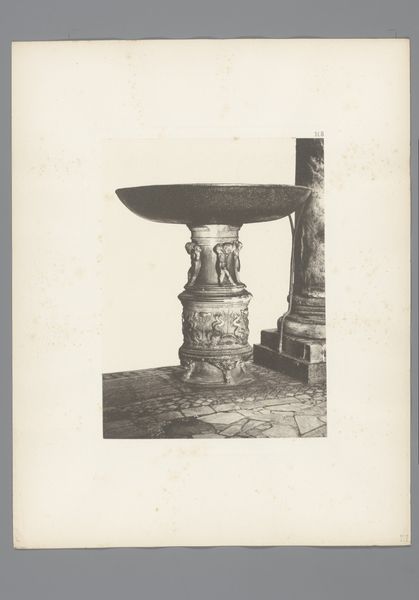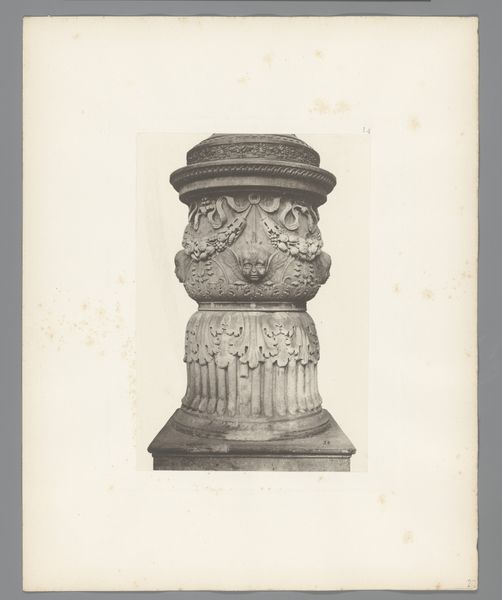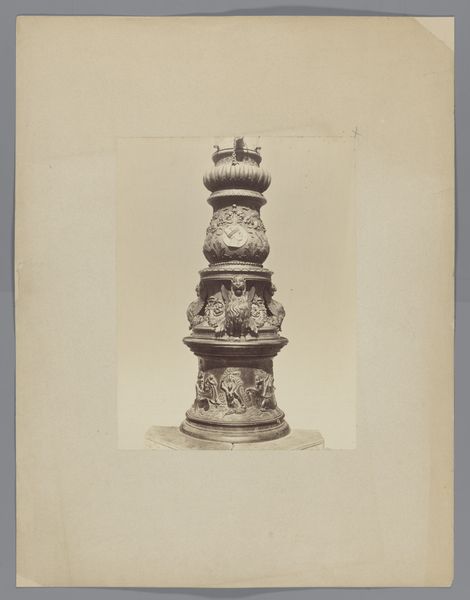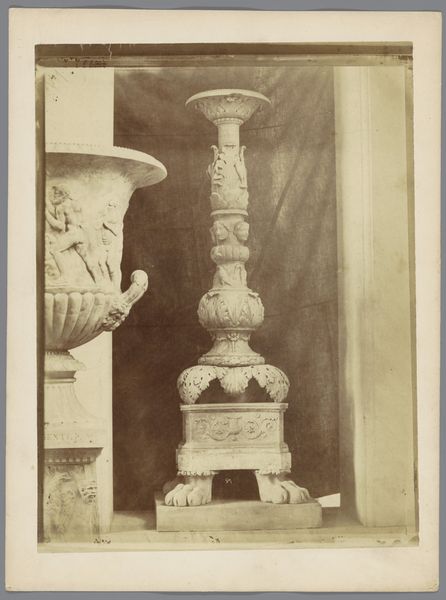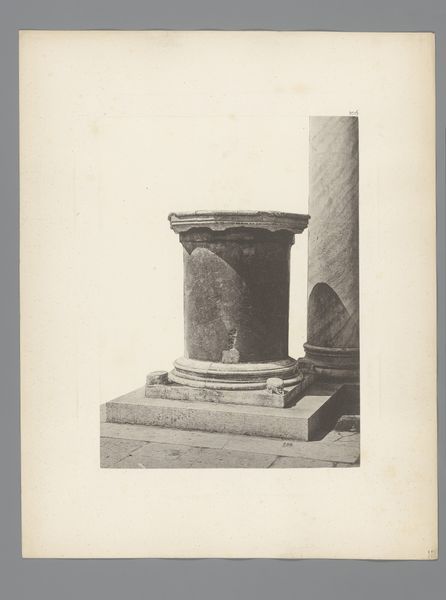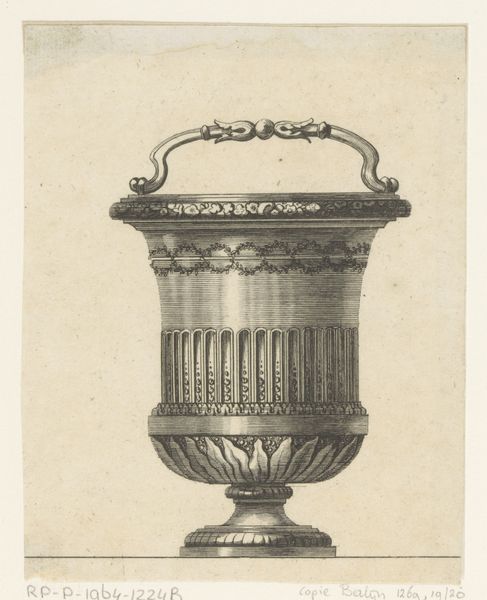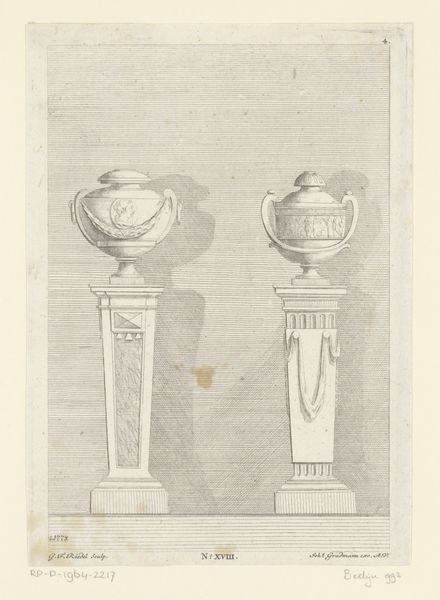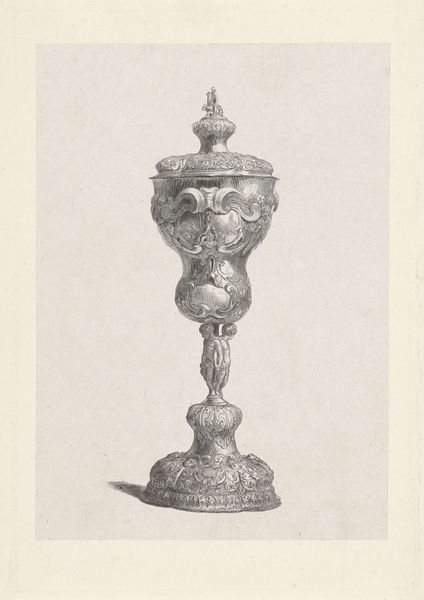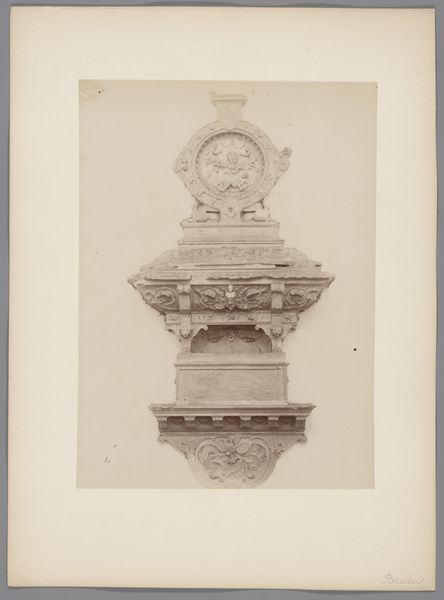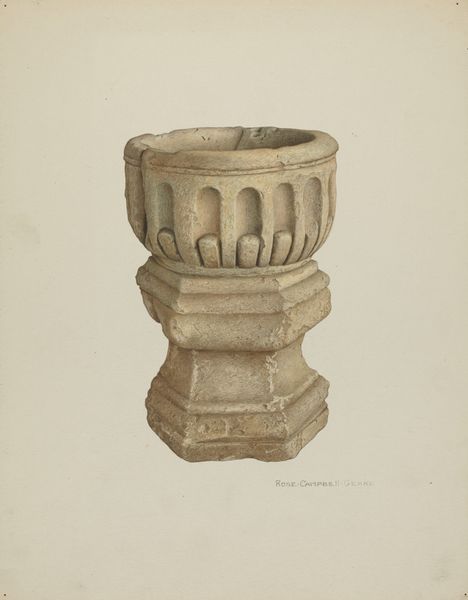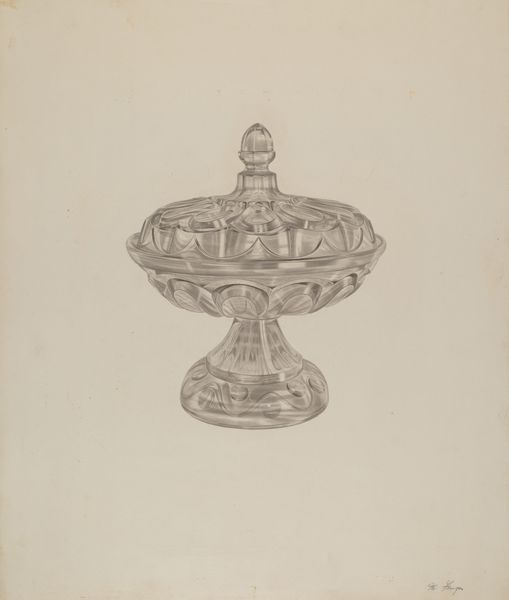
print, photography
# print
#
photography
#
column
#
academic-art
#
realism
Dimensions: height 395 mm, width 312 mm
Copyright: Rijks Museum: Open Domain
Curator: What strikes you first about this photographic print? To me, it's quite monumental, despite the subdued monochrome. Editor: It certainly evokes a sense of historical weight. The strong verticality of the composition, reinforced by the columns, gives it a rather stoic, almost austere presence. Curator: This piece is entitled "Deel van een zuil van de San Marco in Venetië," or "Part of a Column of San Marco in Venice." Carl Heinrich Jacobi created this image sometime before 1885, capturing a fragment of the iconic Venetian basilica. Editor: Ah, Venice! The column instantly takes on deeper significance knowing its origins. The wear and texture evident in the print suggest layers of history and the passage of time. Do you agree? Curator: Absolutely. San Marco is laden with layers of religious and civic meanings. Each column contributes to an understanding of faith, power, and, let’s not forget, maritime glory. That almost bowl-like element at the top—presumably for holy water—implies rituals and shared sacred practices across the ages. Editor: The choice to focus solely on a portion of the column is interesting. It invites close inspection. Jacobi’s masterful capture of the light playing across the stone surface reveals so much detail. You feel you could almost reach out and touch it. Curator: Precisely! And while some might find a fragment lacking, I argue that it's precisely the fragmentation that directs us to what’s been lost and forgotten: echoes of Venetian Renaissance that still pulse. It functions, you see, as a symbol for survival amid fragmentation, suggesting a timeless dialogue that calls into our present lives. Editor: I'm compelled by the suggestion that the architectural fragment has become a microcosm that hints at broader meaning, an artifact whose form and photographic presentation has managed to freeze time. Curator: That is precisely its evocative power—and indeed, this print becomes far more meaningful once we contemplate how architecture shapes not only cities, but collective identities and social experiences as well. Editor: The picture's austere geometry, along with its complex relation with history, invites further explorations of light, shadow, surface, and historical meanings. Curator: Agreed, a beautiful glimpse into how historical photographs of architectural icons, such as San Marco in Venice, help define cultures over generations.
Comments
No comments
Be the first to comment and join the conversation on the ultimate creative platform.
